Indigenous History
The town of Tenterfield was gazetted in 1851, however the region was home to three main Aboriginal nations for many thousands of years before; the Jukembal, Bundjalung, and Kamilaroi people.
The Bundjalung and Jukembal (Yukambul) people were the first to inhabit the land now known as Tenterfield Shire. The Jukembal reputedly called the area ‘Moombilleen’, meaning ‘place of wild honey’.
One of the region’s most famous landmarks, Bald Rock, served as neutral ground for the three nations. It was considered a boundary so meetings and trade could occur on the site without each nation having to journey through the other territories.
The Githabul people have lived in the northern part of the Shire, in and around the lush forests of the ranges straddling the NSW-Queensland border for tens of thousands of years.
Australian Aboriginal culture varies throughout the continent and people from different regions have different ancestral beings, tools, weapons, and art styles. It is thought that clapsticks and emu callers were used by the Bundjalung and Kamilaroi peoples.
Jukembal People
The Jukembal were the first Australians to inhabit the Tenterfield district with their territory straddling the Great Dividing Range from near Glen Innes to Stanthorpe.
The name Jukembal means “the people who say jogom” (jogom meaning no). The Jukembal people reputedly called the area ‘Moombillen’, meaning ‘place of wild honey’.
Bundjalung People
Currys Gap State Conservation Area, located 1km south of Tenterfield at the base of Mount Mackenzie, lies within the Moombahlene Aboriginal Land Council area and the Jukembal language group. Previously known as ‘The Common’, many Aboriginal families were housed here from the 1930s through to the 1980s, before being allowed and accepted to live in town.
Today the Aboriginal community in Tenterfield Shire has two main language groups: The Kamilaroi (Gamilaraay, Gamilaroi) people and the Bundjalung (Bunjalung, Badjalang & Bandjalang) people.
Several generations of both Kamilaroi and Bundjalung people have been born and raised in Tenterfield.
Tenterfield Shire is rich in Aboriginal history with many significant sites including bora rings, scar trees, Woollool Woolloolni and Bluff Rock.
Bora rings
A Bora is the name of an initiation ceremony where boys achieved the status of men, and the site on which the initiation is performed. The ceremony, and the process leading up to it, involves learning sacred songs, stories, dances, and traditional lore. Women are generally prohibited from entering a bora.
Bora rings comprise circles of foot-hardened earth surrounded by raised embankments. They were generally constructed in pairs although some sites have three. The rings are joined by a sacred walkway. Sometimes the boys would have to pass along a path marked on the ground representing the transition from childhood to manhood, and this path might be marked by a stone arrangement or by footsteps.
Scar trees
Aboriginal people caused scars on trees by removing bark to make canoes, containers, shields, and to build temporary shelters. They also cut toeholds in trees to make them easier to climb so they could be used as lookouts and to hunt for possums or bee hives.
Woollool Woolloolni
Woollool Woolloolni is a protected Aboriginal place of cultural and mythological importance to those that lived in the local area.
The 370ha reserve is home to a mountainous granite outcrop, rising over 1,000m above sea level at its peak. On top is a mushroom-shaped rock balancing upon the other boulders. It is visible from Bruxner Highway, 18km northeast of Tenterfield.
Woollool Woolloolni is a centre of spiritual power for the Aboriginal people, a ‘djuravehl’ in the Bundjalang language. A Wuyangali or ‘Clever Man’ called Woollool Woollool had exclusive rights to the djuravehl. Aboriginal people believe that when the owner of a djuravehl died, their spirit would return to that place and cause some physical change.
It is said that when Woollool Woollool died, a rock on top of the present balancing rock fell off. This event indicated that Woollool Woollool’s spirit had returned and that it would now be safe for anyone to approach the site.
The stories that surround this site vary according to the locality of the storyteller. The Wahlubal at Tabulam have one, the Githabul at Mulli Mulli near Woodenbong have another and the song sung by Woollool Woollool’s son is another. They do have common elements – the person, Woollool Woollool, and the importance of the top rock, for instance.
The area was first recorded by European settlers in the early 1840s by Thomas Hewitt, who managed Stonehenge Station south of Glen Innes. He explored the area in the search for a route from the Tablelands to the coast. He marked out the route the Bruxner Highway now follows, and, while doing this, named the rock ‘Wellington’s Lookout’ because of its resemblance to the hat worn by Wellington at the battle of Waterloo.
We are privileged to visit this site (access via Basket Swamp National Park), so please respect this place of great natural beauty and spiritual importance.
Bluff Rock
Situated 10km from Tenterfield on the New England Highway, Bluff Rock is the location of the first known conflict between local Aboriginal people (believed to be either the Jukembal or Ngarabal people) and the European settlers, which occurred in 1844.
There are conflicting versions of the event and how it unfolded, however according to the overseer at Bolivia Station Thomas Keating, who heard it from an old man at Bolivia – a shepherd named Robinson was murdered by Aboriginals at the station. The Aboriginals fled to the rock, chased by a group of station men, who caught them and threw them from the top, killing most of the tribe and injuring the remaining. Today there is no evidence of the massacre, but the majestic beauty of this huge granite rock is undoubtedly one of the most impressive landmarks along the New England Highway.
A collection of Aboriginal artefacts can be seen at the Sir Henry Parkes Memorial School of Arts Museum, including stone axe heads, grinding implements, boomerangs, clubs, shield and spearthrower, and a fire drill set.
The Tenterfield School of Arts also has a commemorative display in its main Banquet Hall, relating to the first official Welcome to Country in Tenterfield that happened in October 2008.
Moombahlene Local Aboriginal Land Council is the Aboriginal organisation in Tenterfield that caters for the needs of the Aboriginal community in the Tenterfield area. Jubullum Aboriginal Land Council caters for the needs of the Aboriginal community east of Tenterfield around Drake and Tabulam.

